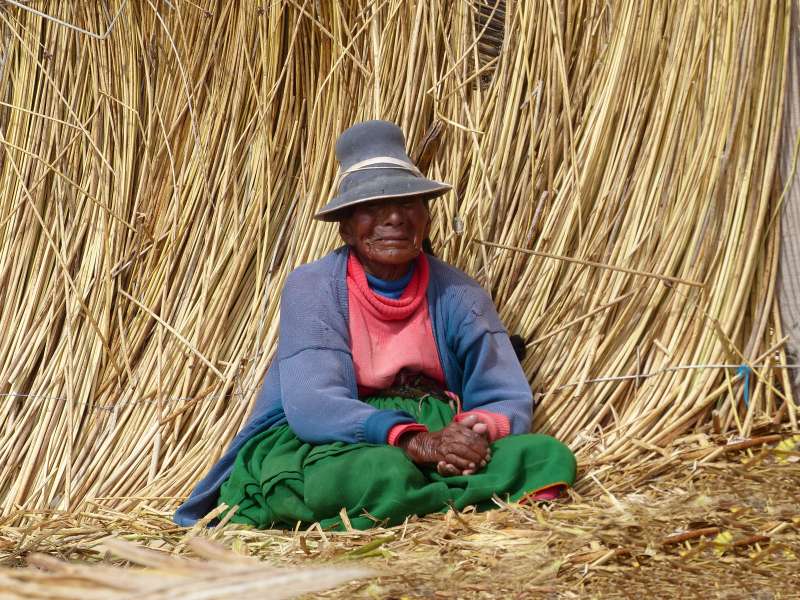
Watching the PBS series Nature in my younger days has inspired me to explore the mysterious and exotic Amazon from the South American countries that are home to the mighty river. Given I’ve visited the Ecuadorian and Brazilian Amazon already, my 35th wedding anniversary seemed to be a fitting occasion for a trip to the Peruvian Amazon. As a matter of fact, why stop there? Machu Picchu beckons, so we might as well do the trek while we can! Of course we need to acclimate for high altitudes before heading to the Inca Trail – one thing led to another and before I knew it, I had a 26 day trip in Peru…
The plan was to start at Puno, the highest elevation for the trip, so we can get a better chance to acclimate before heading for Cusco, the bustling gateway to Machu Picchu. I didn’t have time for a multi-day trek of the Sacred Valley, nor was I interested in a parachute tour of Machu Picchu, where I’d stay at a nearby hotel and then bus to the UNESCO site for a half day walking tour. Instead, I opted for a 2 day-1 nite hiking trip.
Eschewing the comforts of a hotel room, I chose to camp at the base of Machu Picchu the night before and get up at some ungodly hour the next morning to walk back to Aguas Calientes, where all tourists line up to get on the shuttle bus for Machu Picchu. To recuperate from the trek, we would overnight at the picturesque town of Ollantaytambo on the way back to civilization. Of course after the mountains came the rivers. I decided to see the Peruvian Amazon from two perspectives: first on an Upper Amazon river cruise, and then in a jungle lodge in the rainforest. Wrapping up the trip was a few days of R&R in Lima where we could finally have time to indulge in the renowned gastronomy of Peru.
Because of the tight schedule, I took a chance and booked our onward flight to Puno just 2 hours after landing in Lima. We lucked out and got a bit more time in Puno to cope with altitude issues. Not wanting to do anything exertive, we were just going to stroll around town and take the obligatory tour to the Floating Islands on Lake Titicaca the next day. Puno is the world’s largest body of fresh water, and at 12,500 feet above sea level, the highest elevation of the word’s large lakes. Despite downing copious amounts of cocoa leave tea, I still suffered mild altitude sickness with an occasional minor headache, but was otherwise fully functional.
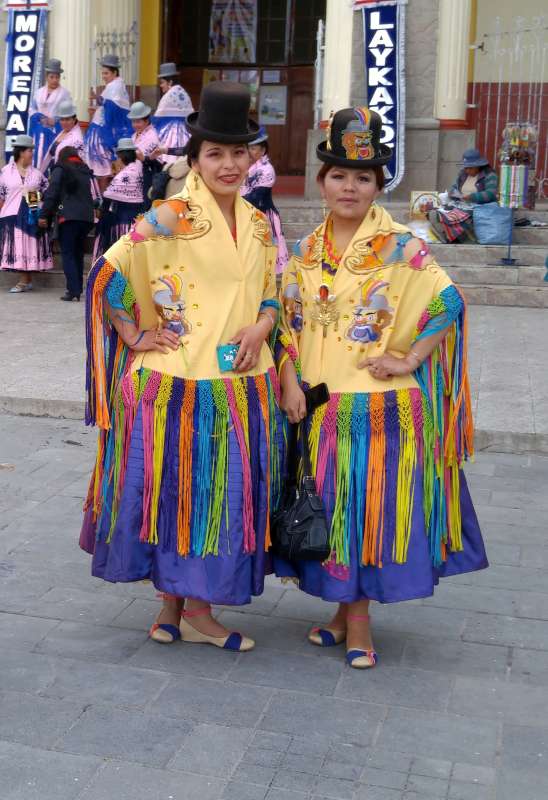
As we wandered around, we came across a festive crowd. There were 3 groups of ladies in matching garb, so presumably they belonged to different dance troupes who were performing for the occasion. Since we got here towards the end, we just contented ourselves with milling around the gathering and snapping random pix.
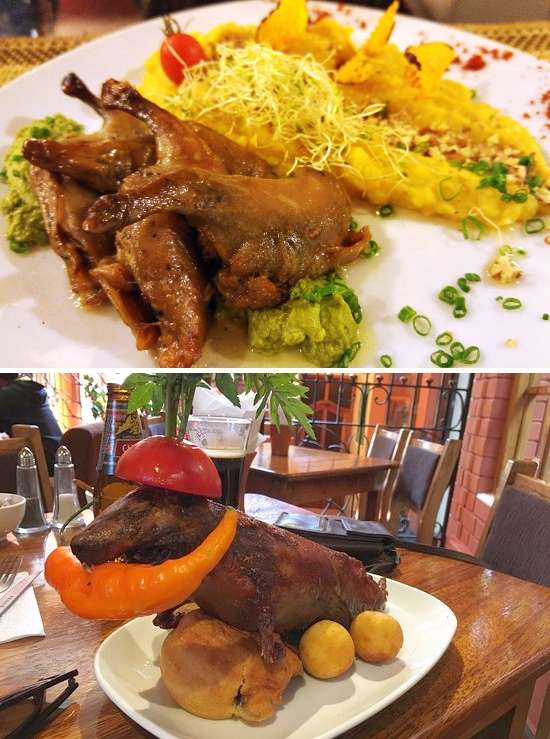
Since I love French food, I was quite happy to find a restaurant, La Table del’ Inca, that offers traditional Peruvian dishes with a French twist. I was doubly excited to see that cuy is on the restaurant’s menu. For the uninitiated, cuy is fried or roasted guinea pig, a dish indigenous to the Andean highlands of Peru, Ecuador, Bolivia and Colombia. Done well, the skin is crackling crisp and meat succulent. My one meal at a cuy specialty restaurant in the Ecuadorian capital of Quito proved lacking, and I’ve been on a hunt for the perfect cuy ever since.
We chose the prix fixe menu with a small supplement for the cuy quarters, which came with mushrooms and persillade mashed sweet potatoes & orange pecan nut sauce. This was certainly the best cuy rendition I had on the entire trip. It was love at first bite: the tender and juicy meat, paired my other favorite foods, sweet potato and mushrooms. It was just what the doctor ordered!
By contrast, Kusikuy where we dined in Cusco, was a venerable establishment that has been serving cuy for a quarter of a century. They offer both roast and fried versions, and as shown here, you get the whole critter, buck teeth and all… The cuy turned out somewhat dry, probably a bit over cooked, but food was certainly plentiful.
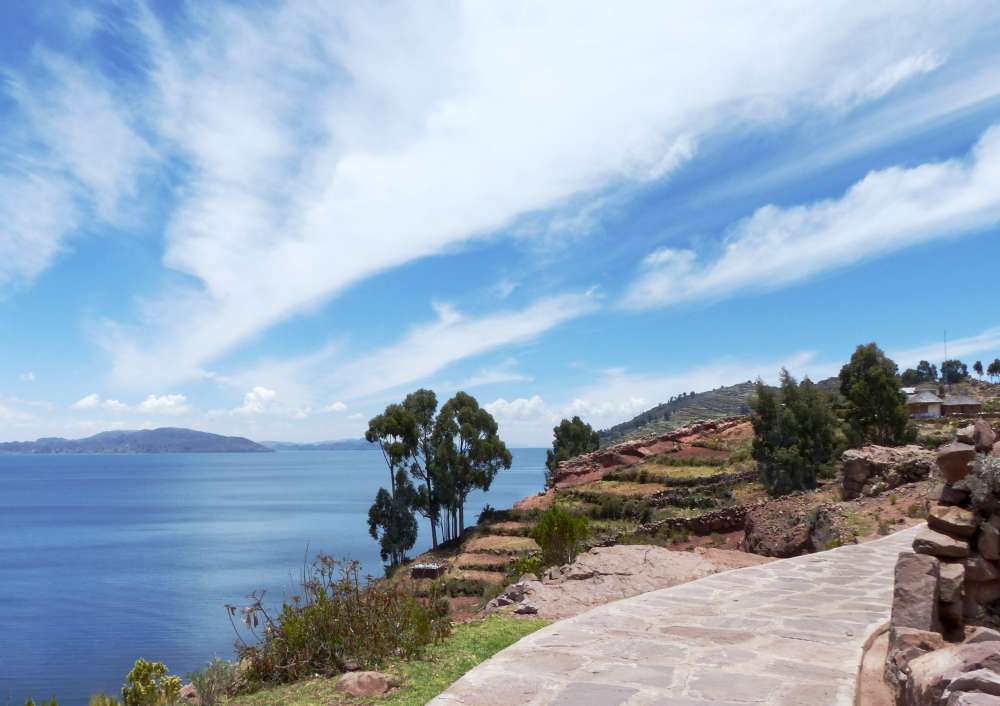
It was a nice sunny day for our excursion. The first stop was Taquile. An idyllic island on Lake Titicaca where the locals seem happy to live without the modern conveniences of electricity or cars. Terraces carved into the hillsides are used for potato crops, and the Taquilean community collectively works to preserve its unique culture by managing the island’s tourism.
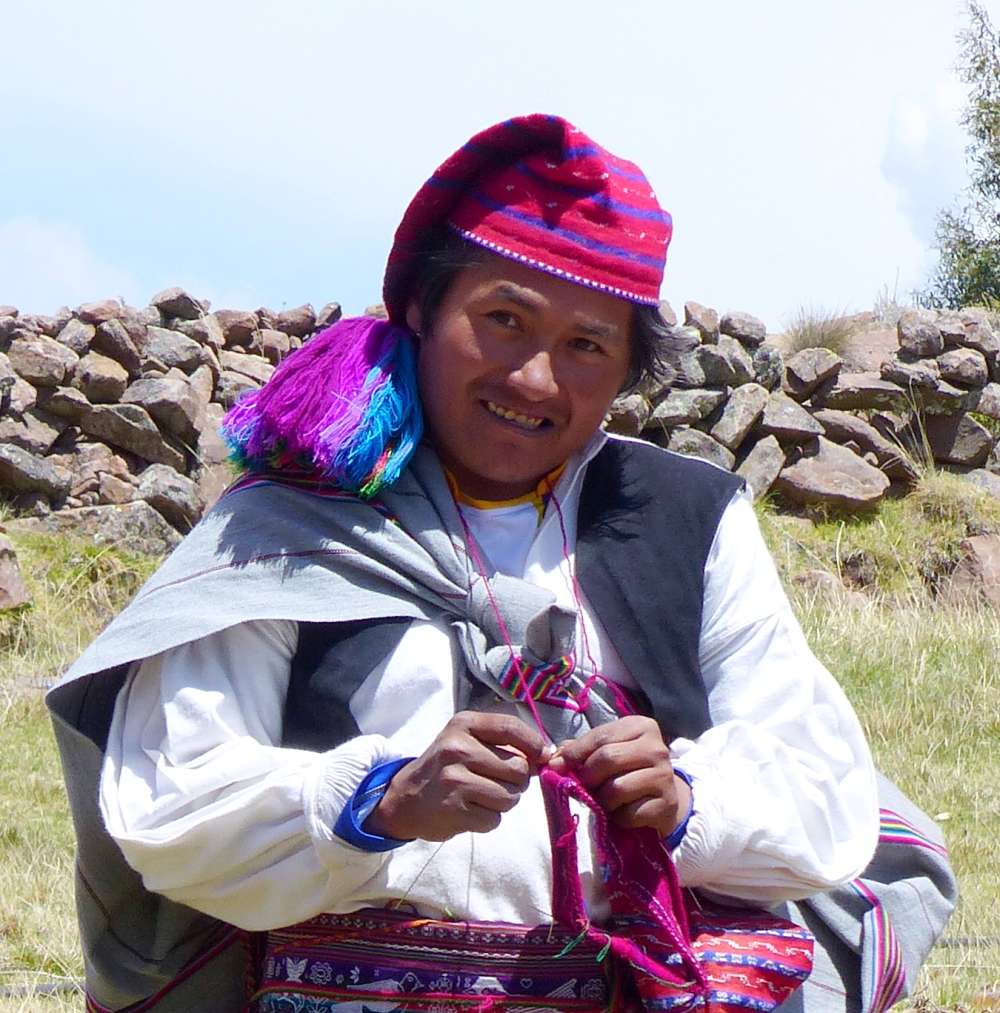
On Taquile, all knitters are male. By custom, a man who wants to get married needs to knit a hat so tightly woven that water won’t seep through, and present it to his future father-in-law for approval. This apparently ensures outstanding craftsmanship, earning Taquilean hand handwoven goods the coveted UNESCO designation ‘Masterpieces of the Oral and Intangible Heritage of Humanity’.

The women on Taquile are responsible for spinning and coloring the wool with vegetable and mineral dyes for the men’s needlework. They also weave special belts for their husbands.
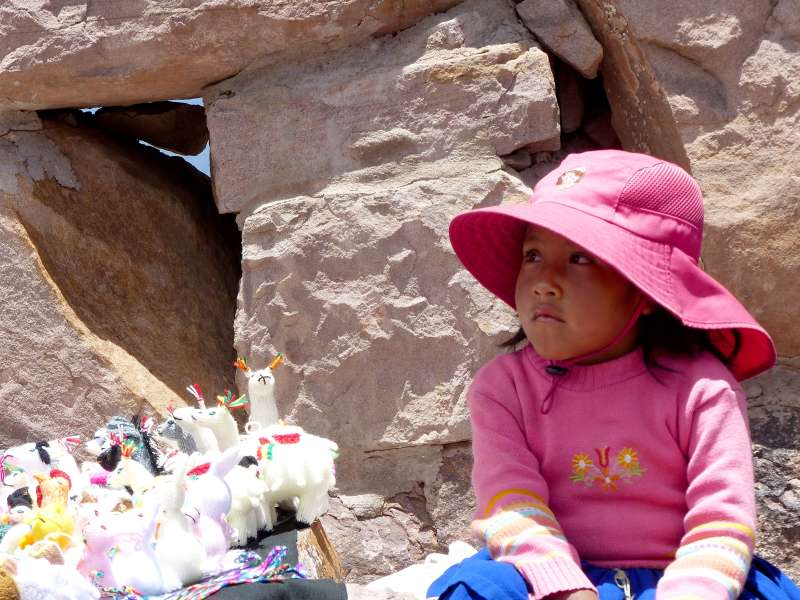
After much interesting information on the cultural practices of the islanders, three of the women and a man performed a traditional dance, and then it was the usual time to peruse handicrafts for sale. Never much into souvenirs, I just browsed to kill time. On the way back to the boat was this little girl with her mom selling stuffed llamas along the roadside.

Since the tour pick up was at 7 am, we were definitely feeling peckish by noon. Our speedboat docked at a secluded scenic spot on the shores of the Capachica Peninsula. At the beach front was a casual restaurant where our Pachamanca – the traditional Andean way of cooking meat, fish and potatoes using an underground oven – was being prepared.
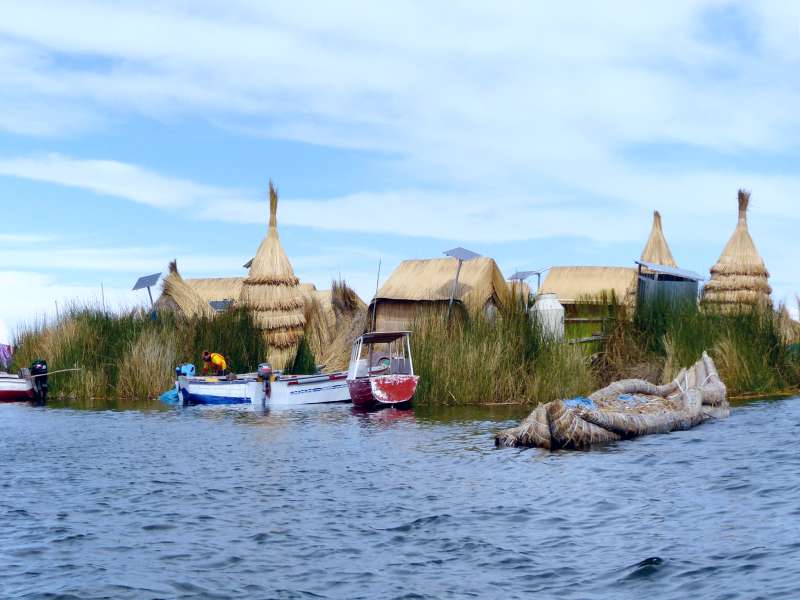
Finally we headed towards the fabled Floating Islands of Lake Titicaca, where for thousands of years, reeds are the building material for everything above and below water. Dried Totora reeds from the lake are used to float the islands and boats. The man-made islands are built by an indigenous people, called Uros or Uru. Like Taquile, this tour is supposed to be ‘less touristy’, but the sad fact is with 200,000 visitors (2011 data) descending on these floating islands, it’s small wonder the islands manage to stay afloat under the stampede! Reeds have to be replenished every 3 months in order to maintain a base of about 2 meters (6.5 ft) thick. The plants are purportedly growing shorter these days, which require even more work to keep the islands afloat. Unfortunately the islanders are busy with the tourist trade so have little time for the repairs.
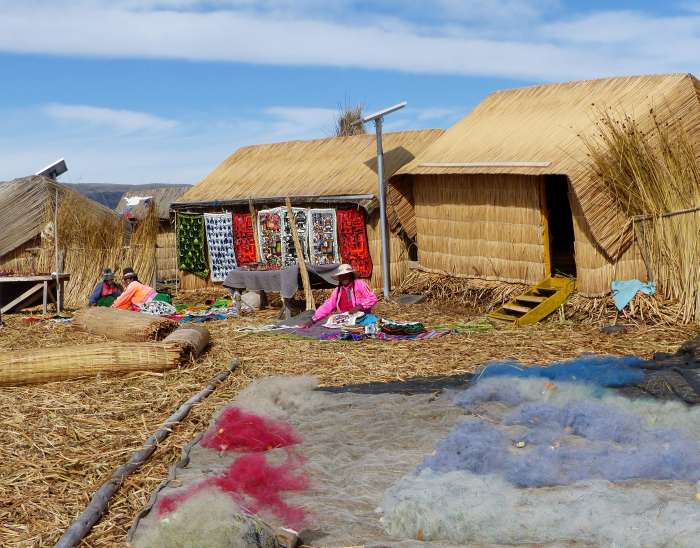
Maybe not as extreme, but unlike the Taquileans, the Uros people fully embrace technology, so you see the jarring juxtaposition of solar panels, power poles and satellite dishes against the traditional reed homes. Yarns are dyed and set out in the sun to dry. As typical of the area, bright and fluorescent colors dominate the palette.
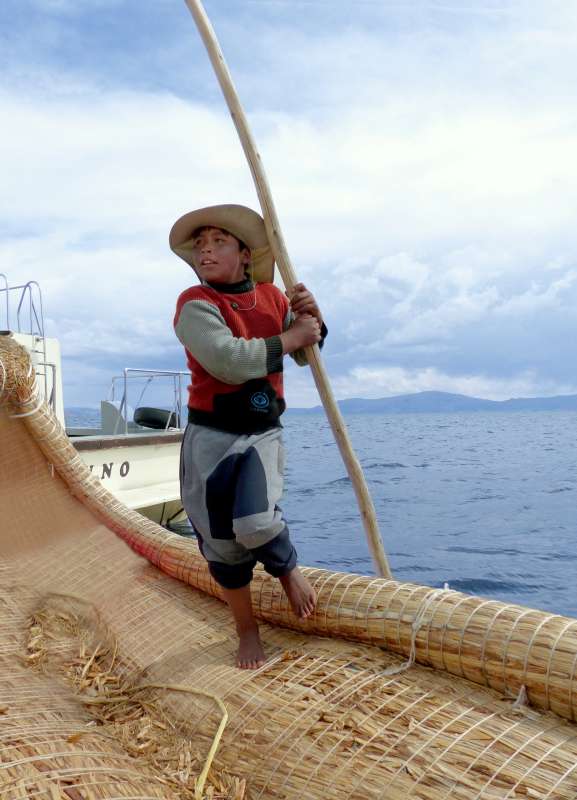
Of course no Floating Island experience will be complete without an upgrade to a balsa (reed boat) ride! A family of 3, the father with his young son and daughter, took us out on a boat. This was a simple affair, unlike the ones with elaborate canopies or upper decks, which are probably concocted primarily for tourist consumption. Being in the reed boat gave us different vantage points of the island and it was easier to take pix compared to the bumpy speed boat ride.
The next day we set out for Cusco, the capital of the Inca Empire, a 6.5 hour bus ride away. Long distance bus travel is popular in South America as it’s reasonably priced and offers plenty of amenities. Our spacious double-decker bus had onboard rest room, 160 degree reclining seats, free wifi and choice of lunch included. Certainly more comfortable and convenient than flights that would take 4 hours with a stop on Lima!
We arrived early afternoon and proceeded to check out the local sights and restaurants. The hilly terrain of Cusco, especially the quaint San Blas district where our hotel was located, turned out to be more challenging at high altitudes than the relatively flat Puno. Climbing the steep interminable steps (or so it seemed) gave me shortness of breath and some very blue lips…
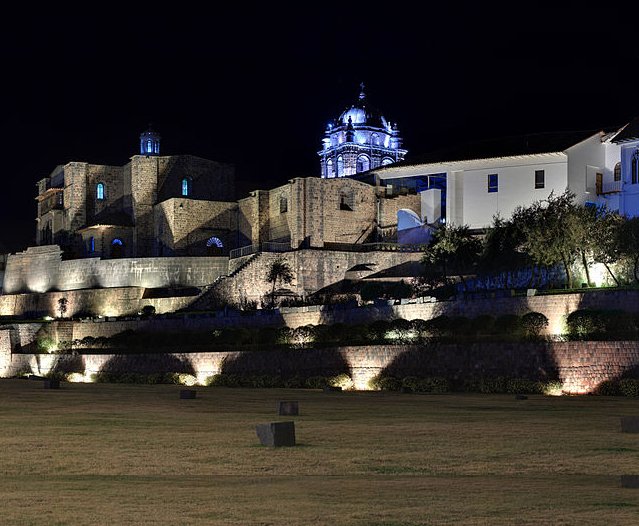
Corikancha (Golden Enclosure) was the most sacred temple complex of the Incas, and was once lavishly adorned in gold, silver and precious stones. It also bore witness to the Empires’ tragic encounter with the Conquistadors. The Spanish captured Emperor Atahualpa in 1532 and the Incans stripped their temples of gold to meet the ransom demand. But it failed to save the emperor’s life and Cusco fell to the invaders. Under colonial rule, the Convent of Santo Domingo was built atop the foundation of Corikancha, creating the hybrid architectural edifice as seen today.
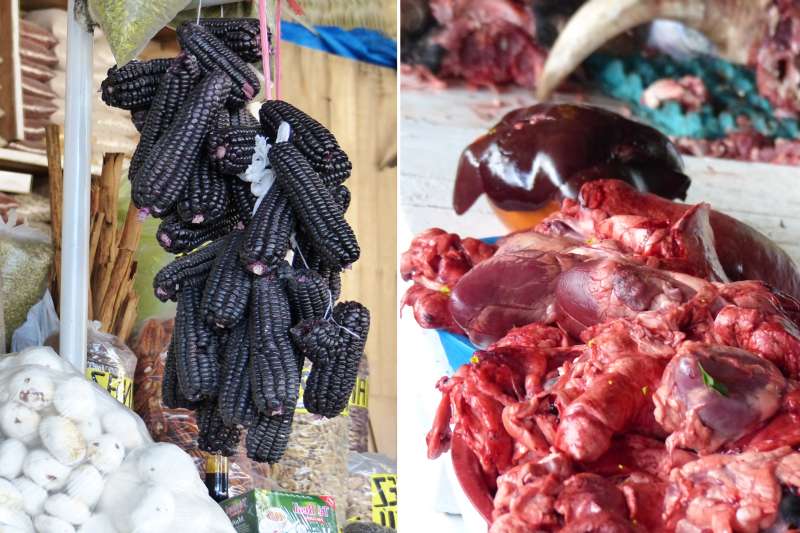
We went on a tour that included visits to the local market, some Inca sites with a snack along the way. Our guide took us to San Pedro Market where we saw an abundance of purple maize. Widely grown in the Andean region, the corn is the basis of Peru’s national drink, Chicha Morada. Not for the faint of heart, there were also plenty of assorted cow parts: heads, hoofs, and hearts. Cow heart skewers (anticuchos de corazón) are a popular Peruvian street food, and cow hoof soup (caldo de pata de res) is the Peruvian equivalent of our chicken noodle soup. In fact our guide claimed daily consumption of the collagen-rich soup was the secret to her wrinkle-free skin!
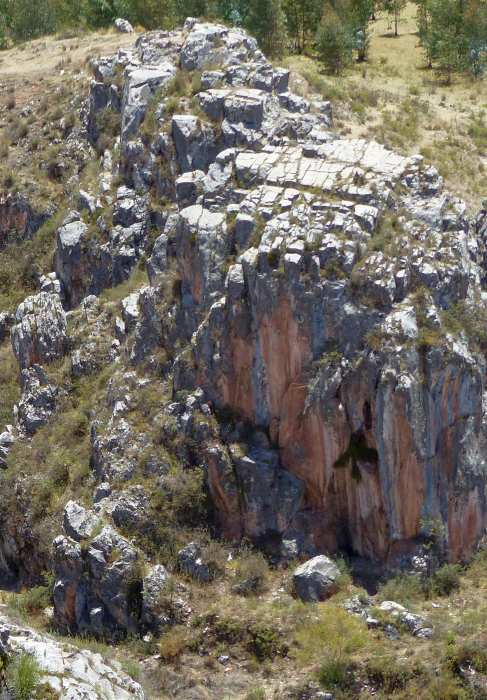
We got out of Cusco, past some pastoral land to reach an overlook for Q’enqo (zig-zag in Quechua, the native language of the indigenous people of the Peruvian Andes). Hatun Q’enqo (Big Q’enqo) consists of a series of natural chambers and man-made passages in this massive rock formation. It is speculated that mummifications and ceremonial sacrifices took place here. Uchuy Q’enqo (Little Q’enqo) was unfortunately mostly destroyed with little remaining to show its purpose.
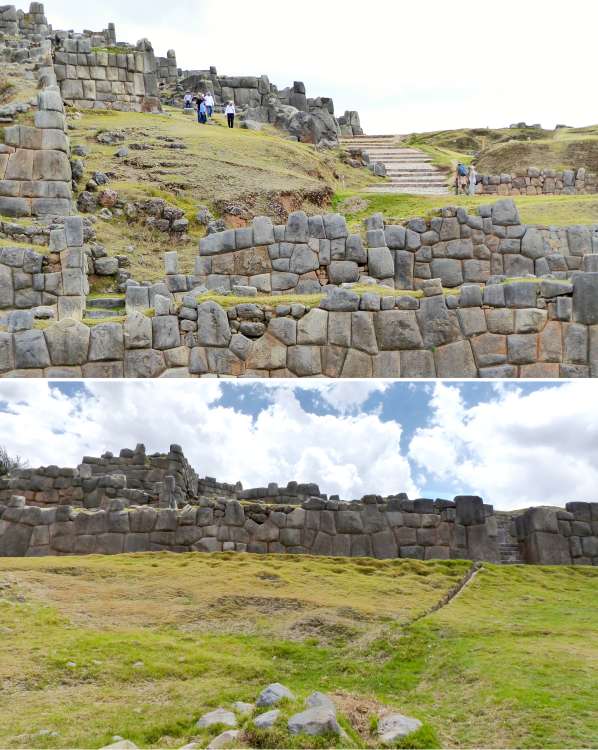
It was believed that Cusco was planned in the shape of a puma when viewed from above, with the fortress of Sacsayhuamán as its head. Walls of the three-tiered fortifications stood about 12 to 18 feet high, made from blocks weighing between 100 to 200 tons each. Llike Corikancha, the masonry was so precisely cut and tightly fitted that no mortar was needed to hold the stonework in place. That these structures withstood devastating earthquakes over hundreds of years is a testament to the incredible skills of the Incans.
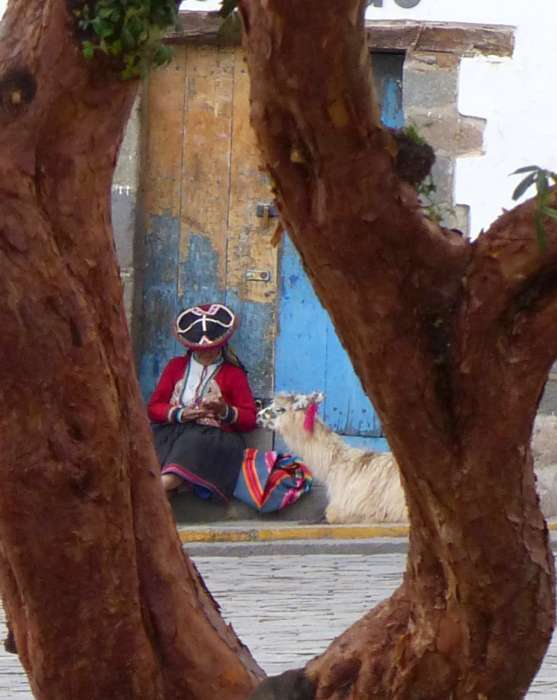
Walking around town after the tour, I spotted this indigenous woman resting with her llama across the street. Having seen a family picnicking with their pet llama in the countryside, it’s not too wild for locals to be walking with a pack animal, but I suspect this llama is more likely a photo prop for tourist pix in the middle of Cusco!
The rest of the day was pretty laid back as we had to finish packing and catch ZZZs early to start our Machu Picchu hike the next day. While multi-day camping treks are a dime a dozen our trekking company, Alpaca Expeditions, is the only well regarded outfitter that offers a 2 days 1 nite camping trip. Since our camping trip came with porter and cook to carry our belongings, prepare meals and set up the camp site, we weren’t exactly roughing it.
We had to visit Alpaca Expedition’s Cusco office to finalize payment and attend an orientation meeting. The cost included use of a 12″ x12″ x24″ duffel bag to hold personal belongings and a clean sleeping bag, but I added air mattress rental in hopes of getting better sleep. We picked up two sets of duffels after meeting our guide and got confirmation of the group size. As I hoped, no one else had booked this tour for our departure date, so we scored one of their popular guides at basically the group price for a private tour! Now we only had to fit all our chattels, plus their sleeping bag and air mattress, into the duffel bags. Each bag couldn’t exceed 11 lbs as the porters had to carry not only our gear, but everything else needed for the camping trip. I was concerned about the bag capacity and weight limit, but it worked out fine. Sadly our pick up time was an excruciatingly early 4 am, the standard departure for Machu Picchu tours. So we turned in early, and tried to get some rest, but it was like the night before Christmas, except we were having visions of Machu Picchu dancing in our heads!!


